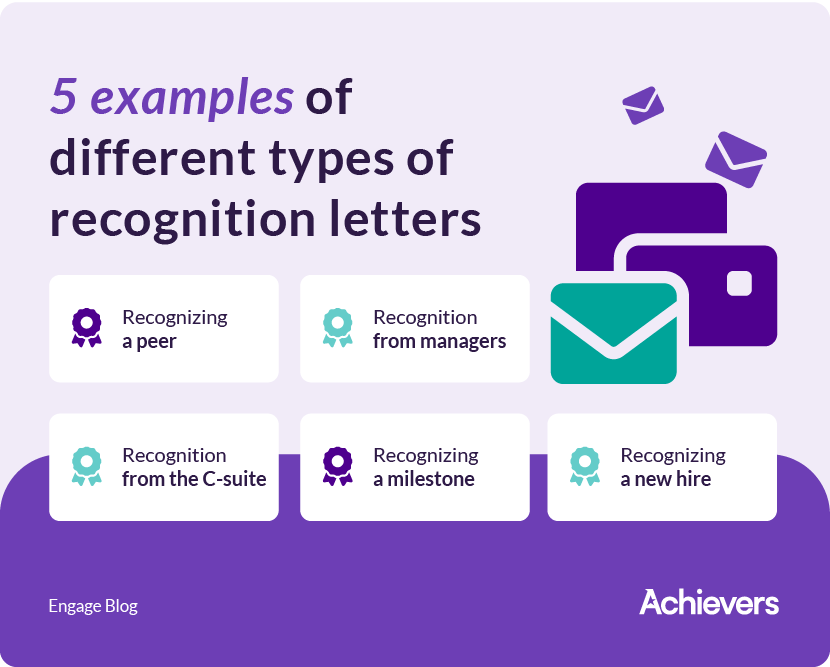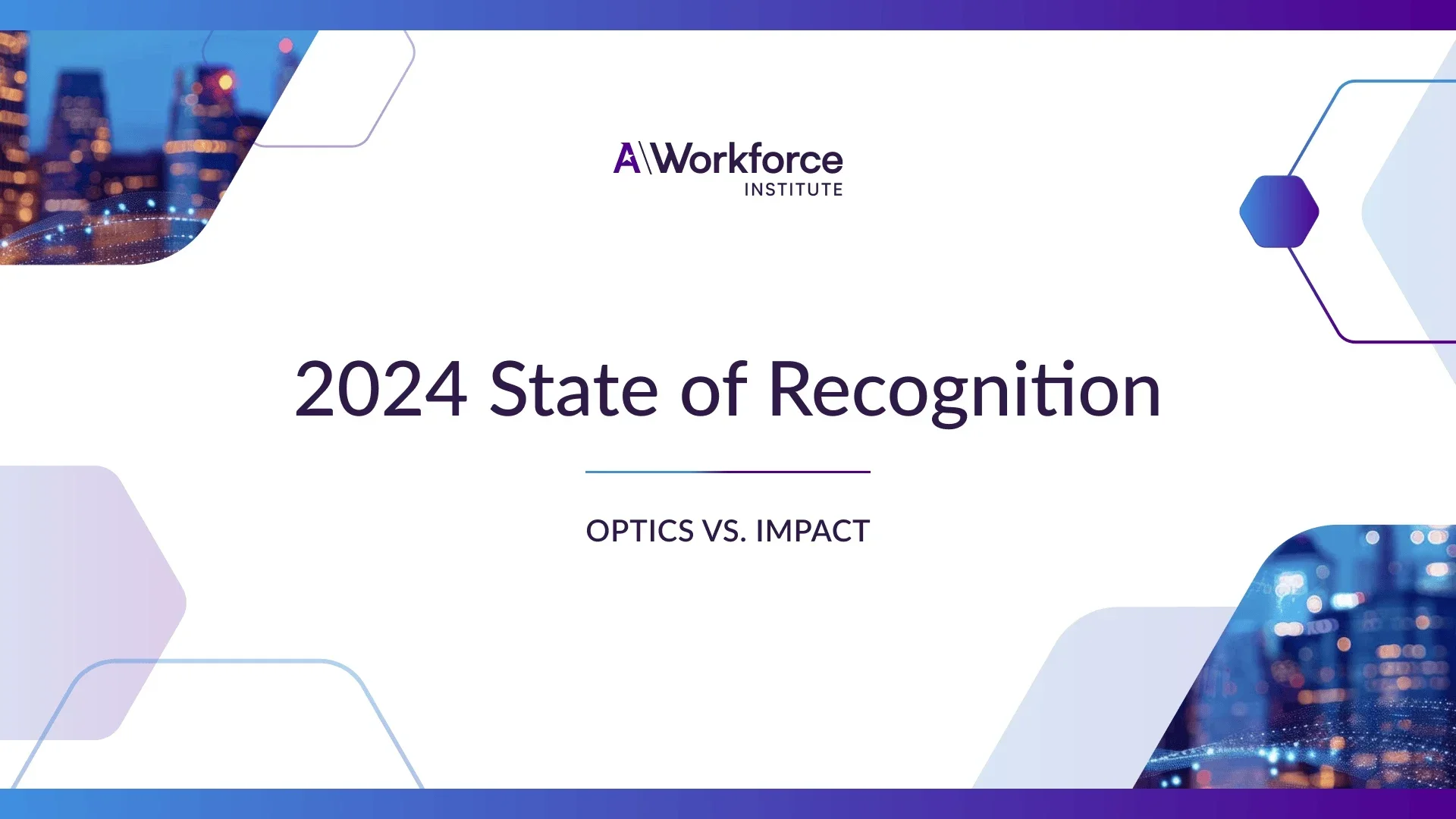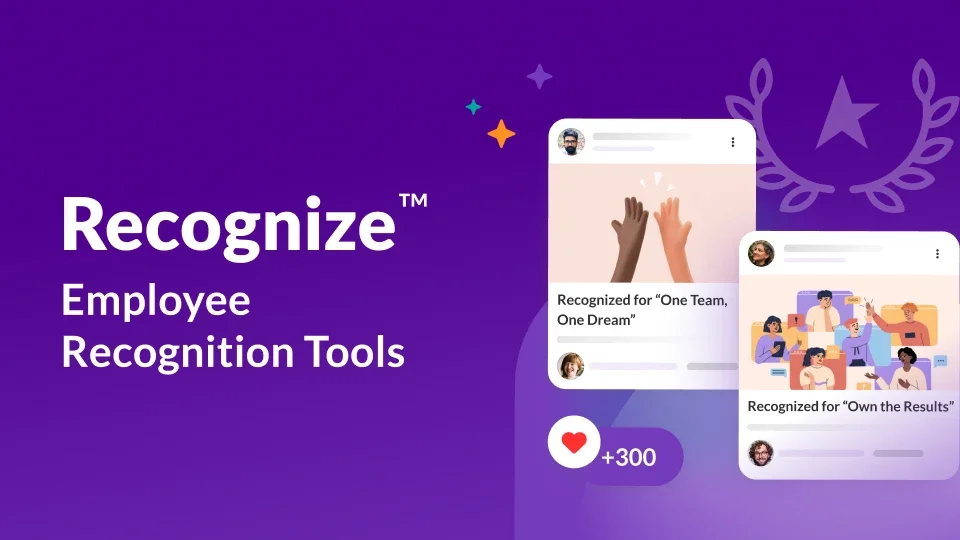Table of contents
A great recognition letter does more than just say “thank you” — it makes employees feel seen, valued, and appreciated. Whether you’re celebrating a big win or acknowledging the everyday efforts that keep things running smoothly, taking the time to put your appreciation in writing can have a lasting impact. A well-crafted message can boost morale, strengthen relationships, and reinforce a culture of recognition in your workplace.
Not sure where to start? This guide has you covered with practical tips and sample letters to help you craft a meaningful message for any situation. Whether it’s a formal note of appreciation or a quick thank-you for a job well done, the right words can make all the difference.
What is a recognition letter?
A recognition letter is a message of appreciation sent to an employee. It can be anything from sharing a note of thanks, acknowledging a recent win, or sending a message of congratulations.
You should also use all available tools to make writing and sending recognition messages as easy and fun as possible. For example, with an employee recognition program, you can quickly recognize multiple employees in a single message. You can even tie each recognition to a company value, which can pay huge dividends — organizations with cultures aligned with their values are six times more successful than their competitors.
Make sure you choose an employee recognition platform that offers all the features you need to make both giving and receiving recognition a great experience.
Why should you write a recognition letter?
Writing a recognition letter is important for several key reasons, and these statistics back it up:
- Improved morale: A recent study surveying 2,000 U.S. employees reveals that 72% value being connected to their company’s culture.
- Increased productivity: Achievers Workforce Institute (AWI) data shows that employees recognized monthly are 2x more productive and 28% more likely to stay productive than those recognized quarterly.
- Increased engagement: A recent Gallup poll shows that 33% of U.S. employees are actively engaged, while only 17% are disengaged.
How do you write an employee recognition letter?
Writing an employee recognition letter involves several steps to ensure it’s thoughtful, genuine, and impactful:
- Start with a warm greeting: Begin by addressing the employee by name to create a personal connection.
- Be specific: Clearly identify the achievement or behavior you’re recognizing. This adds weight to your appreciation.
- Express genuine appreciation: Use sincere and heartfelt language to convey your gratitude for their efforts and contributions.
- Provide details: Share specific examples or instances where the employee’s work stood out, emphasizing its impact.
- Connect to company values or goals: Tie their achievements to the company’s mission, values, or goals to highlight its significance.
- Use positive language: Keep a positive and uplifting tone throughout the letter to motivate and inspire.
- Personalize the message: Make the letter personal by referencing the employee’s unique qualities or contributions.
- Close on a positive note: End the letter by expressing confidence in their future contributions and thanking them again.
How do you format a recognition letter?
While the content of your message is undeniably important, the way you format and present that message can make a world of difference in its impact. Here are some additional tips on how to format a recognition letter to ensure your points of appreciation truly shine:
- Use bold text for achievements: Highlight key accomplishments to make them stand out and reinforce their significance.
- Emphasize gratitude with italics or underlining: Use formatting to enhance the sincerity of your appreciation.
- Structure examples with indentation or numbered lists: Organize specific instances clearly to make recognition more impactful.
- Link recognition to company values with headers: Use subheadings to connect achievements to broader organizational goals.
- Keep it clear with bullet points: List key takeaways concisely to maintain focus and readability.

10 recognition letter examples
Here are 10 sample employee recognition letters that could be sent personally as a note or publicly on your employee recognition platform:
1. Recognizing a peer
Fostering peer-to-peer recognition is a key part of building a strong culture of appreciation. Since colleagues work closely together, they see each other’s efforts firsthand and have the most opportunities to give meaningful recognition. Encouraging team members to celebrate each other’s contributions helps create a supportive and motivated workplace.
Encourage your team members to recognize each other in the spirit of this example letter:
Hi Evan,
Thanks for your invaluable help with my presentation. Your insights on onboarding new team members and structuring the tutorial were game changers. Your expertise on short notice was deeply appreciated.
Your dedication to “Go Beyond” isn’t just a phrase; you truly embody it. Our CTO loved the presentation and wants more training presentations. I highlighted your contributions and hope we can collaborate further on this project.
Best,
Sarah
2. Recognition from managers
Managers play a crucial role in shaping the employee experience, making their recognition especially meaningful. When employees feel valued by their supervisors, it boosts motivation, strengthens relationships, and reinforces a culture of appreciation. Acknowledging achievements not only inspires individuals but also sets a positive example for the entire team, fostering engagement and long-term commitment.
See how meaningful recognition from management can be in this recognition letter:
Hi LeeAnn,
Impressive job leading today’s client meeting on our new marketing campaign! Your detailed justification of our previous work and clear presentation of results were outstanding. You seamlessly addressed their concerns with a tailored plan, embodying our core value of driving success.
You’re a rock star, and your roadmap has set us on a successful path. Everyone on the team should recognize your contributions. I am looking forward to seeing what reward you choose with your points!
Thanks for your exceptional work,
Phoebe
3. Recognition from the C-suite
Leaders should prioritize recognition to set the tone for the entire organization. When executives take the time to acknowledge employees’ contributions, it reinforces a culture of appreciation from the top down. This kind of visibility can be a powerful motivator, fostering a sense of purpose and encouraging employees to continue striving for excellence. When leaders make recognition a priority, it creates a ripple effect, inspiring managers and peers to do the same, ultimately strengthening engagement and morale across the organization.
Here’s an example of a meaningful recognition letter from the C-suite:
Hi Alex,
I wanted to personally recognize the incredible leadership you’ve shown in driving our latest strategic initiative forward. Your ability to align cross-functional teams, keep everyone focused on our goals, and navigate challenges with a solutions-oriented mindset has been truly impressive.
Your commitment to excellence and collaboration directly contributes to our company’s success. It’s leaders like you who help shape the future of our organization, and I’m excited to see what you accomplish next.
Thank you for your dedication and impact!
Best,
[Executive Name]
[Title]
4. Recognizing a milestone
While recognition should be a daily occurrence, that doesn’t mean that recognizing milestones and anniversaries is unimportant. Showing employees that your organization appreciates their major achievements makes all the difference and makes employees feel noticed. You can even consider providing this recognition in the form of a digital celebration card that allows all team members to add special messages or even fun images and GIFs.
Take a look at this thoughtful message recognizing an important milestone:
Hi Bill,
Congratulations on your first work anniversary as an Account Manager! Your transition into the role has been seamless, and your dedication to client success shines through. I’ve witnessed your ability to adapt and excel firsthand, both in meetings and on our product committee. Your contributions to improving our sales handoff process are commendable and will have a lasting impact.
It’s been a privilege working with you this past year, and I’m excited to see your continued success here.
Best regards,
Lacy
5. Recognizing a new hire
Recognition should be part of the entire employee experience, starting from the day someone joins the organization. Prioritizing culture when hiring and during the onboarding process helps positively shape an employee’s thoughts and feelings about their new employer. You then need to get team members involved with giving and receiving recognition as soon as possible so they understand this important part of your company culture. Including them in this important company practice will create a sense of belonging and connection that improves employee engagement and helps counter modern trends of disconnection.
Provide your recent hires with recognition letters like these early and often:
Hi Kelsey,
Impressive work in just a few weeks! Your quick learning and contribution to our email marketing tool’s debugging sped up its rollout. Your positive attitude and teamwork have made you a go-to person for new team members. I also appreciate your active role in the celebration planning committee.
Keep up the great work, and don’t hesitate to reach out if you need anything as you continue to excel here.
Best,
Tyler
6. Recognizing a team effort
Teamwork is the foundation of any successful organization, and recognizing collaborative efforts reinforces its importance. When employees feel appreciated for their contributions to a team, they are more likely to stay engaged, communicate openly, and support one another. This not only strengthens team bonds but also fosters a positive work environment where individuals are motivated to share ideas, problem-solve together, and strive for excellence. A culture of recognition encourages ongoing collaboration, leading to stronger relationships, increased trust, and ultimately, better results for the organization as a whole.
See how to recognize your whole team with one letter:
Hi Team,
I wanted to take a moment to recognize your incredible work on the new product launch. The coordination between marketing, sales, and development was seamless, and your dedication ensured a smooth rollout. The way you all handled last-minute challenges with creativity and efficiency was truly inspiring.
This launch wouldn’t have been the same without each of you. Your teamwork perfectly reflects our value of “Stronger Together.” I’m excited for what’s next!
Best,
Maria
7. Recognizing innovation
Encouraging employees to think outside the box and recognizing their innovative ideas fosters a culture of creativity and continuous improvement. When employees feel valued for their unique insights and problem-solving skills, they are more likely to take initiative, experiment with new approaches, and contribute fresh perspectives. This kind of recognition not only boosts morale but also drives engagement and motivation, inspiring individuals to push boundaries and seek better solutions. A workplace that celebrates innovation creates an environment where employees feel empowered to challenge the status quo, leading to greater efficiency, adaptability, and long-term success.
Demonstrate your admiration for innovation with a recognition letter like this:
Hi Jordan,
Your creative solution to streamline our customer support ticketing system was a game changer. Not only did it reduce response time by 20%, but it also improved customer satisfaction significantly. Your ability to identify challenges and develop practical solutions is invaluable to our team.
Innovation like yours drives our success, and I’m grateful for your contributions. Keep up the amazing work!
Best,
Marcus
8. Recognizing leadership qualities
Leadership isn’t limited to those with formal titles — employees who step up, support their colleagues, and lead by example play a vital role in shaping a positive workplace culture. Recognizing these individuals reinforces the importance of initiative, collaboration, and mentorship within the organization. When employees see that their leadership qualities are valued, they feel empowered to take ownership of projects, offer guidance to their peers, and contribute to a more cohesive and motivated team. Acknowledging informal leaders not only boosts their confidence but also encourages others to embody the same proactive mindset, driving overall growth and success.
Encourage leadership behaviors with this sample letter:
Hi Dana,
I wanted to personally thank you for stepping up and mentoring the new hires on our team. Your patience, guidance, and enthusiasm have made a noticeable difference in their onboarding experience. They’ve shared how much they appreciate your support in helping them navigate their roles.
Your leadership and willingness to help others truly make our workplace better. I appreciate everything you do!
Best,
Kevin
9. Recognizing adaptability
Employees who embrace change and remain flexible during transitions play a crucial role in keeping the organization agile and forward-moving. Their ability to navigate uncertainty, adopt new processes, and support colleagues through shifts in strategy fosters a culture of resilience and growth. Recognizing adaptability not only validates their efforts but also encourages others to approach change with a positive mindset. When employees feel valued for their flexibility, they are more likely to stay engaged, contribute innovative solutions, and help create a work environment that thrives in the face of challenges.
Show employees you value their ability to adapt with a strong recognition letter like this:
Hi Chris,
Your ability to quickly adjust to the new project management system has been remarkable. Not only did you take the time to learn the platform, but you also helped others get up to speed, making the transition much smoother for the entire team.
Your adaptability and proactive attitude make a huge difference. Thank you for leading by example!
Best,
Ava
10. Recognizing customer service excellence
Outstanding customer service is the backbone of a company’s reputation and long-term success. Employees who go the extra mile to assist customers, solve problems, and create positive experiences help build trust and loyalty, both internally and externally. Recognizing these efforts not only reinforces the importance of a customer-centric culture but also motivates others to deliver exceptional service. When employees feel valued for their dedication to customers, they are more likely to remain engaged, take pride in their work, and continue finding ways to enhance the overall customer experience.
Customer service deserves appreciation. Show it with a letter like this:
Hi Taylor,
I wanted to take a moment to recognize your exceptional customer service during last week’s escalated issue. Your patience, problem-solving skills, and commitment to finding a resolution left a lasting impression on the client. They personally reached out to commend your professionalism and dedication.
Your work embodies our commitment to excellence. Thank you for making a difference!
Best,
Jamie
Make recognition easy with the right platform
Crafting the perfect recognition letter takes time and effort, but with the right tools, it becomes second nature. Achievers Recognize makes employee recognition seamless by providing customizable templates, company value tagging, and the ability to send real-time recognition with just a few clicks. Whether you’re celebrating an individual achievement or a team effort, Achievers ensures that appreciation is meaningful, visible, and integrated into your company culture. Start recognizing today and build a workplace where every contribution is valued!



